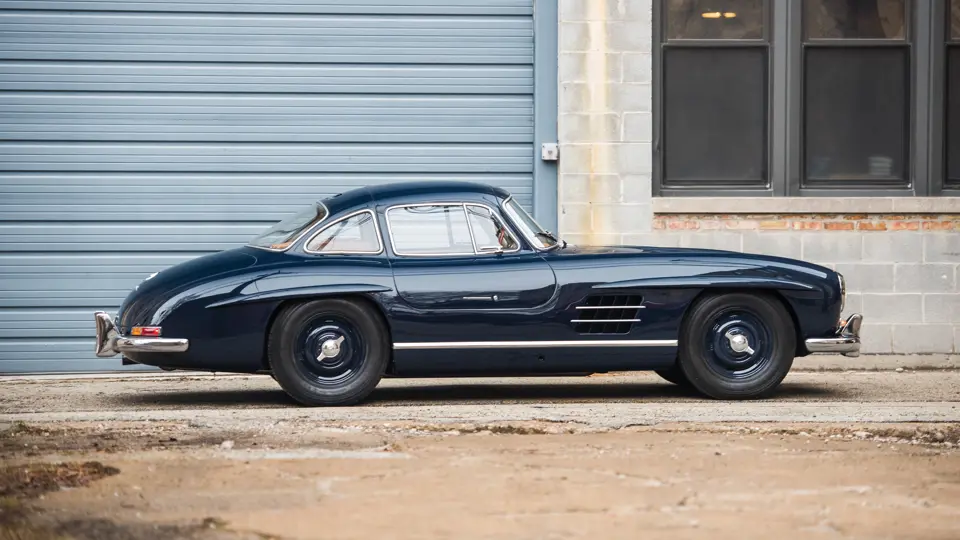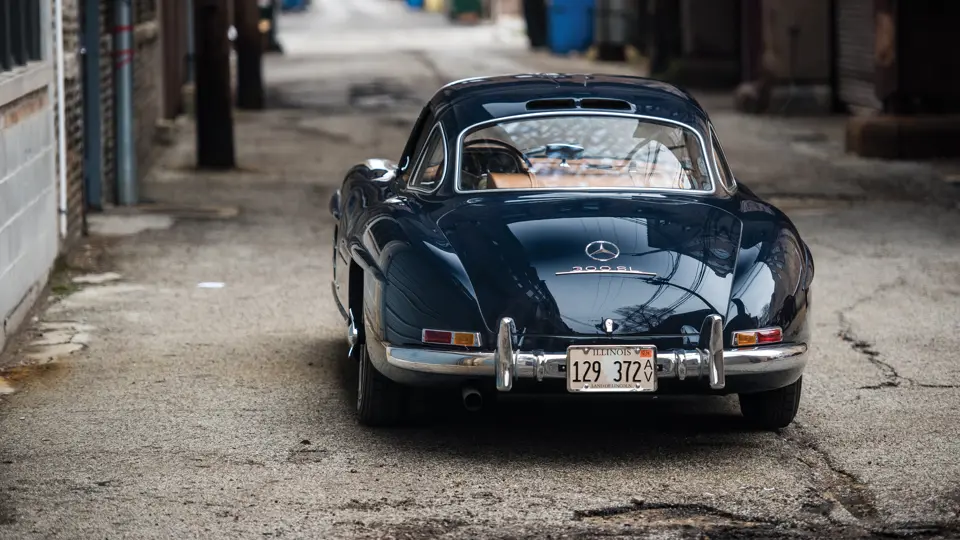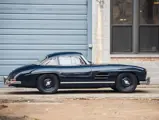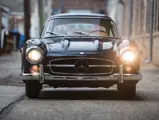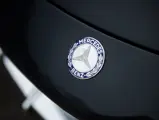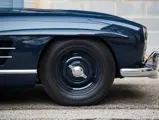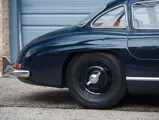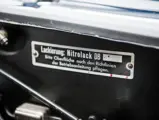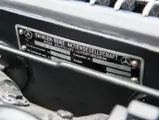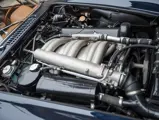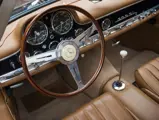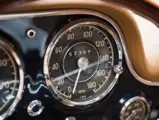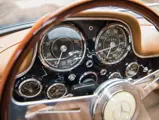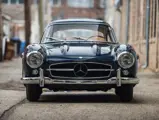
1954 Mercedes-Benz 300 SL Gullwing
{{lr.item.text}}
$1,358,500 USD | Sold
Offered from a Private Collection
{{bidding.lot.reserveStatusFormatted}}
- Offered from a private collection
- One of 167 examples built in the first year of Gullwing production
- Two-year cosmetic and chassis restoration completed in 2007; engine rebuild in 2009
- Formerly owned by a Gullwing Group chapter president
- Accompanied by fitted luggage set, knock-off hammer, and period sales literature
- Documented with restoration invoices, photos, and correspondence
- Original numbers-matching engine and Rudge wheels
- Ideal candidate for concours display or vintage driving events
215 bhp (DIN), 240 bhp (SAE), 2,992 cc SOHC inline six-cylinder engine with Bosch mechanical fuel injection, four-speed manual transmission, coil-spring independent front suspension, coil-spring and swing-axle rear suspension, and four-wheel hydraulic drum brakes. Wheelbase: 94.5 in.
Few sports cars in the history of the automobile have attained the iconic status of Mercedes-Benz’s celebrated 300 SL coupe, which combined peerless racing heritage with truly innovative design and engineering. First appearing in 1952 as the W194 sports racer, the 300 SL was intended to return Mercedes-Benz to competition relevance and was notable for its advanced lightweight space-frame chassis, and a retuned version of engineer Rudolf Uhlenhaut’s inline six-cylinder engine (which was already employed in the 300 sedans). The most notable feature of Sindelfingen designer Karl Wilfert’s breathtaking coachwork was undoubtedly the roof-hinged doors, which was necessitated by the chassis’ high waist. This unique feature earned the model its eventual nickname, the “Gullwing.”
Dominating nearly every race it entered, the 1952 300 SL W194 attained legendary status with victories at the 1952 24 Hours of Le Mans and the Carrera Panamericana, a cachet that was not lost on the United States importer Max Hoffman. Since renowned for his savvy of the emerging American market for European sports cars during the 1950s, Hoffman made considerable efforts to convince Mercedes-Benz that a strong niche existed for a road-going series-production version of the 300 SL race car. His plea did not fall on deaf ears, and consequently at the 1954 International Motor Sports Show in New York, the company introduced a luxurious new take on the racing Gullwing.
In addition to a more luxurious cabin upholstered in leather, the road-going 300 SL, classified as the W198, featured a number of improvements over its racing forebear, including doors that were cut substantially lower for easier entry and exit. The road car also significantly improved on the race car’s power output by employing mechanical fuel injection, good for an additional 44 horsepower. The model is notable as the first production automobile to feature the since widely copied method of fuel induction.
After the W198 commenced production in August 1954, numerous subtle mechanical developments were undertaken during the course of the first year, including a re-designed clutch assembly, a revised position for the shifter, and adoption of Daimler-Benz’s proprietary recirculating-ball steering system. Gearing ratios were also adjusted, with the final drive ratio of 3.64:1 eventually made a standard specification, while other ratios were available as options.
Produced in a modest quantity of 1,374 examples over a three-year production run, the 300 SL Gullwing has since evolved into one of the most collectible sports cars ever built, and perhaps the most historically important sporting model ever produced by Mercedes-Benz.
This beautifully restored 300 SL is approximately the 116th example of 167 cars built in 1954, the model’s first year of production. According to the records of the Gullwing Register, chassis number 4500116 was originally finished by the factory in White Gray paint and upholstered with an interior of fawn vinyl with red plaid seat inserts. Also optioned with chromed Rudge wheels, a 3.64:1 rear-axle ratio, a side mirror, a Becker radio, and an accessory luggage set, this car was initially sold to Walter Schumacher of Heusenstamm, Germany.
Over the ensuing decades the handsome Gullwing was exported to the United States, and by the early 2000s it was owned by Mervyn Phillips, president of the Western Great Lakes Chapter of the Gullwing Group. Mr. Phillips sold his fine 300 SL, and in 2005 the car passed through The Last Detail, a classic car restoration house in North Chicago owned by Tom Snellback.
In November 2005, Snellback sold the 300 SL to the current owner, a respected collector of exceptional sports cars based in Chicago. As part of the purchase agreement, Snellback was contracted to conduct a restoration, which included a bare-metal repaint in period-correct dark blue and a re-upholstering of the interior in tan leather. Numerous correct parts were ordered from marque experts around the world, including the Gullwing Group, the Mercedes-Benz Classic Center in Irvine, California, the esteemed Paul Russell & Co. in Massachusetts, and the respected HK-Engineering in Germany.
After the 300 SL completed restoration in October 2007, the owner set about acquiring desirable accessories like the wooden Nardi steering wheel (a popular period upgrade, though the original, unrestored steering wheel accompanies the car), a set of fitted luggage fabricated by the experts at Taris Charysyn and Co., correct tools, a period sales brochure, and an authentic storage bag for the removable quarter-windows (made from correct MB-Tex vinyl).
In early 2013, Mercedes specialist Axel Knauz was retained to perform a complete overhaul of the original engine and transmission. Mr. Knauz is a factory-trained Mercedes-Benz master technician who worked at a Daimler-Benz dealership for 30 years before opening his own mechanical shop in Lake Bluff, Illinois, in 2006.
In correspondence with the consignor that is retained in the car’s file, Knauz reflected on his impressions of the engine’s originality, assessing that it had probably never before been disassembled. His work included boring the cylinders and installing new pistons, refurbishing the engine head with new intake valves and valve guides, machining and balancing the crankshaft, and performing a final re-adjustment of the valves and torqueing of the head. The disassembly and refurbishment were captured in a set of photographs that are also included in the car’s documentation. Completed in January 2015, the engine rebuild resulted in a smooth state of mechanical operation, promising a strong future of spirited excursions.
Finished to an extremely high level of detail, this beautiful Gullwing exudes a particularly sporting character in dark blue paint with matching Rudge wheels, echoing the competition-specified examples. Also extremely well-documented, this fine early 300 SL will be welcomed at Mercedes-Benz Owners Club events and finer concours d’elegance, and is a strong candidate for vintage driving events like the California Mille or Colorado Grand.




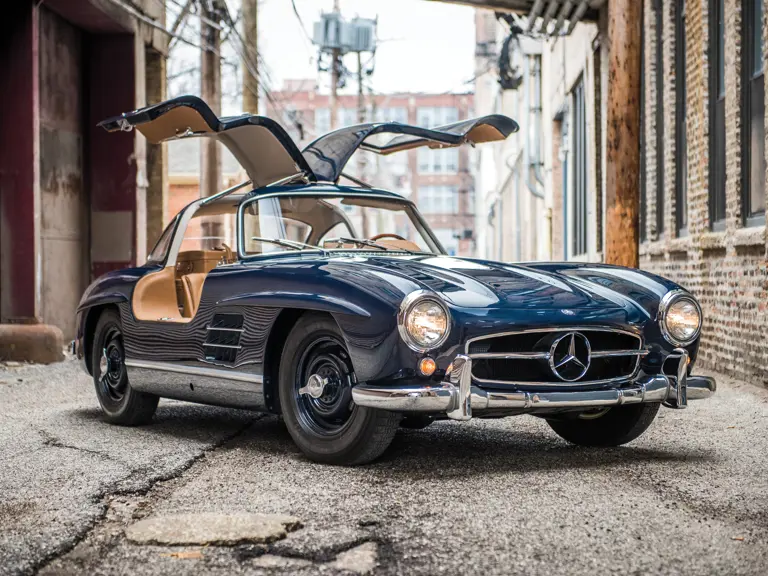

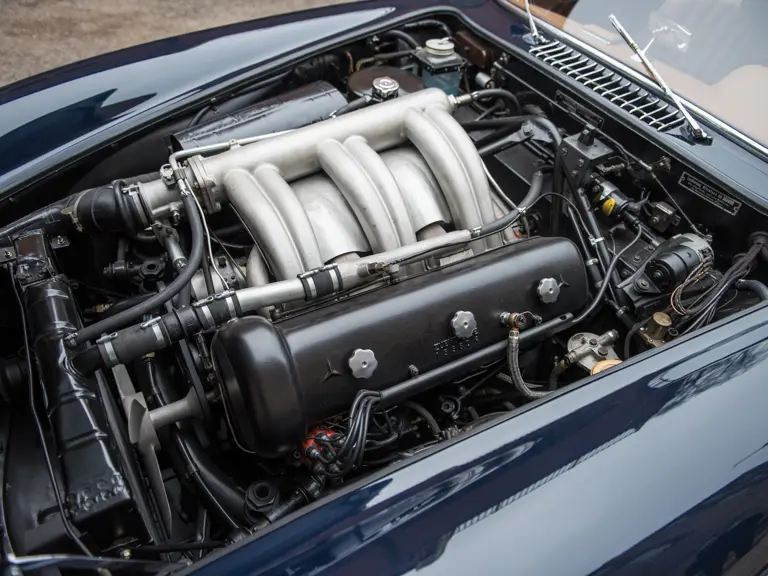

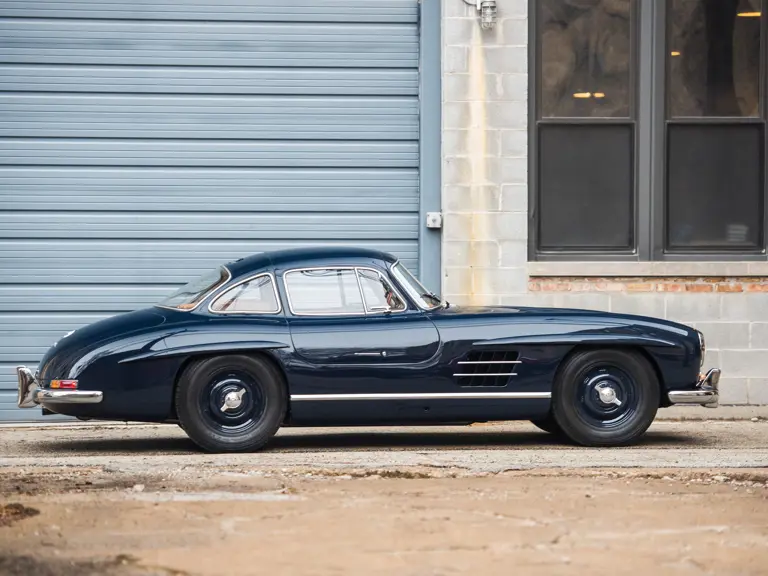
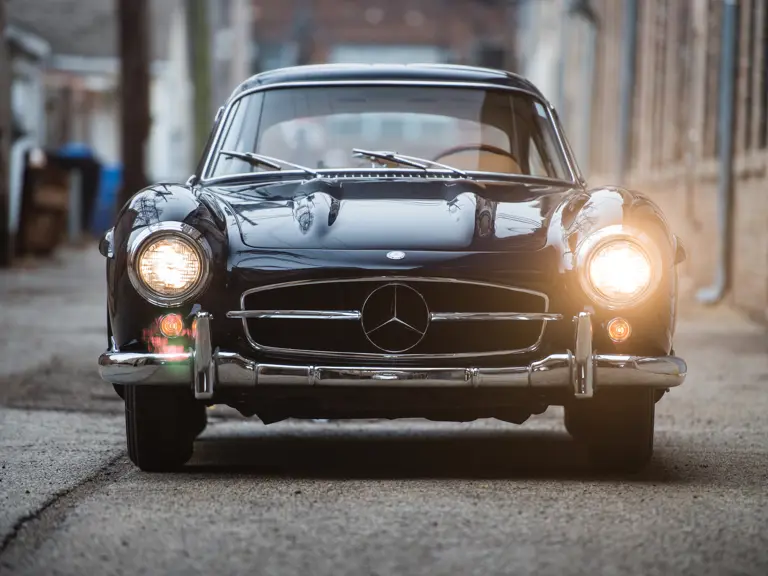
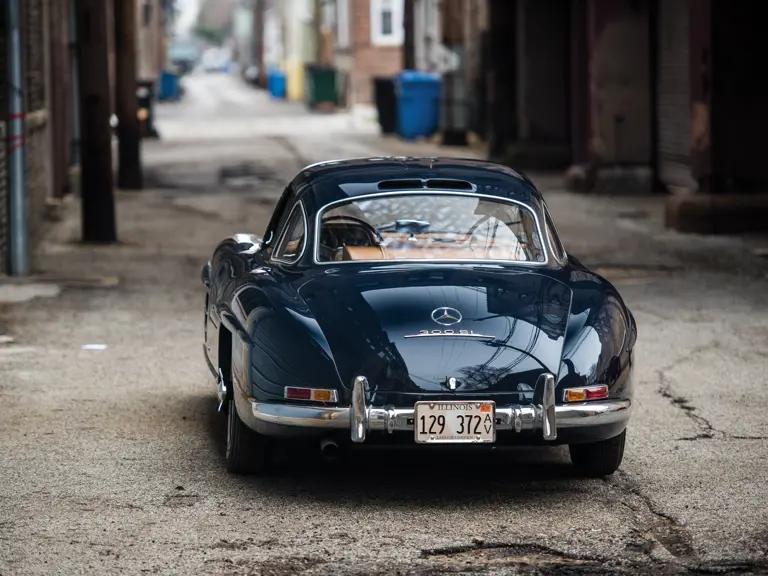
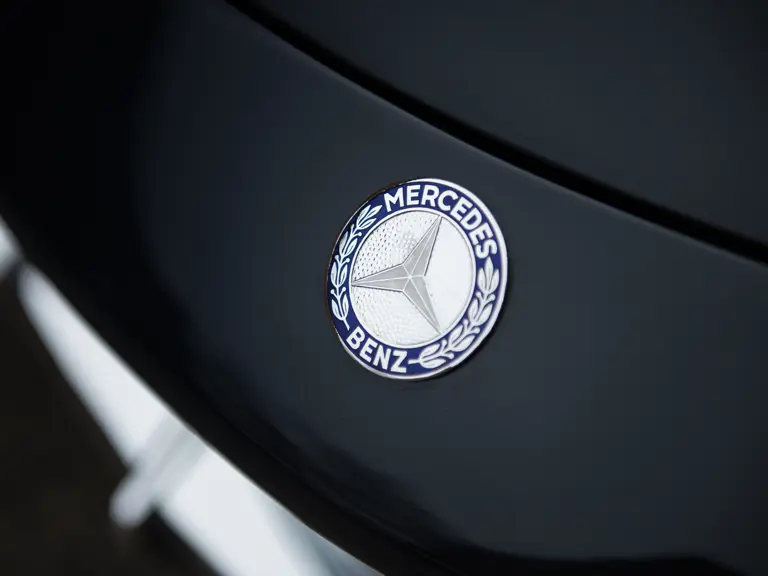
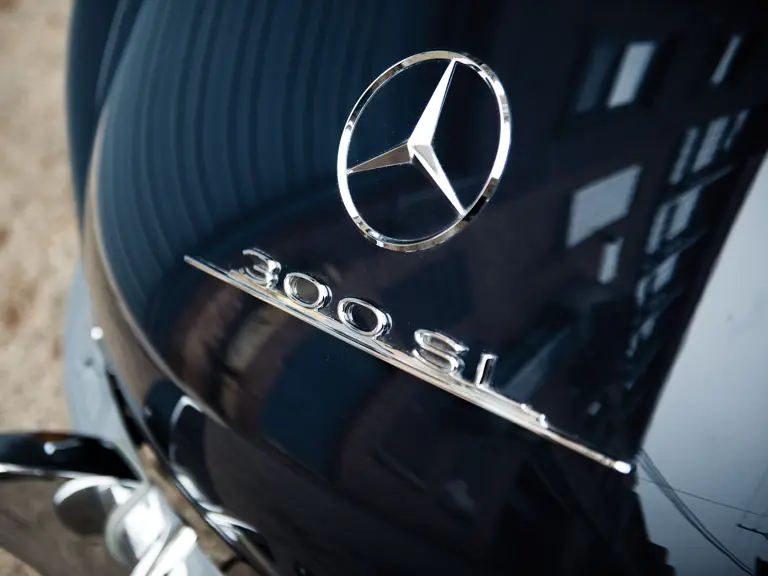
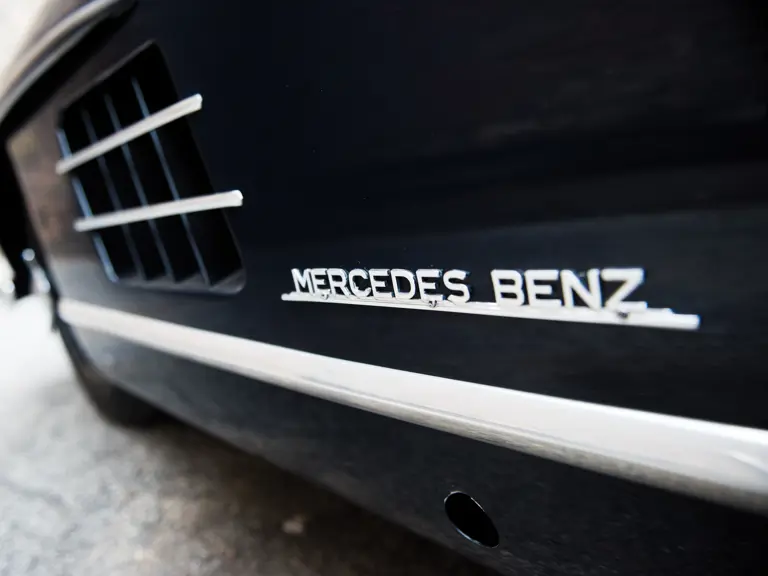

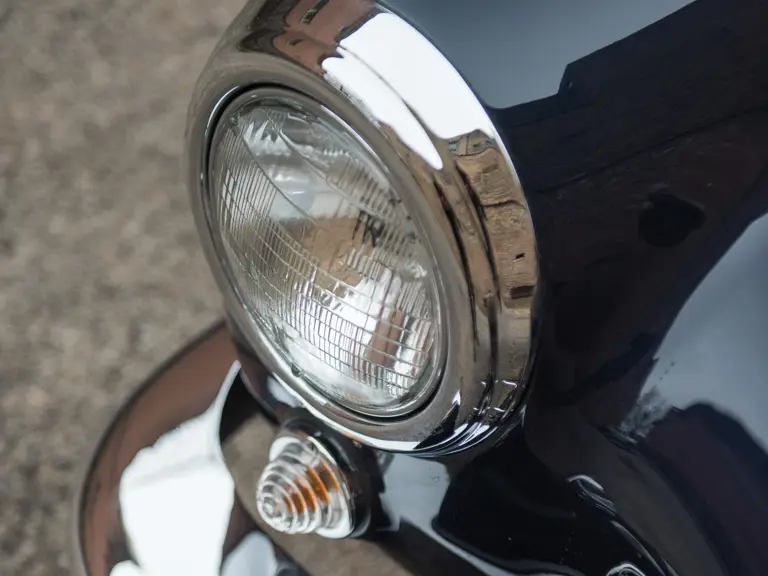
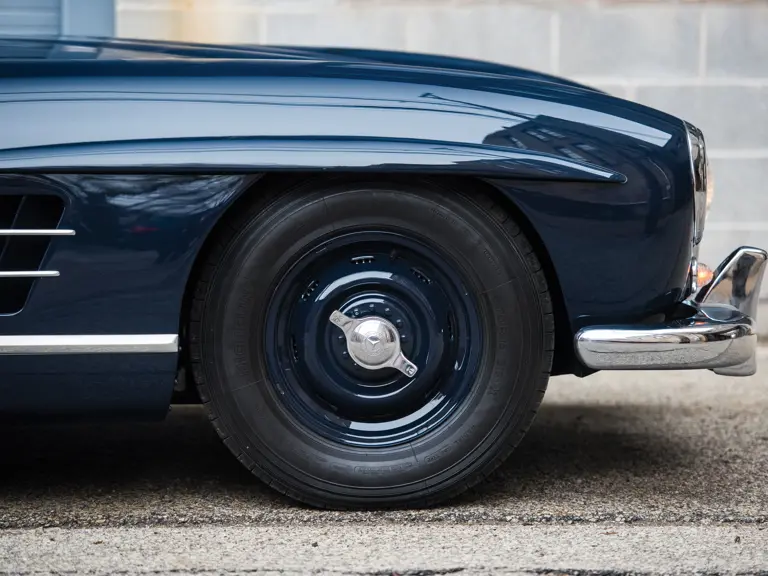
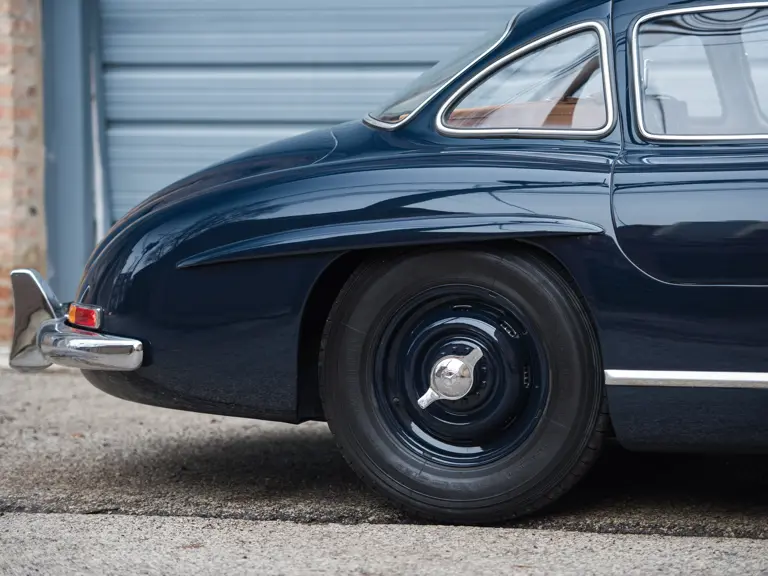
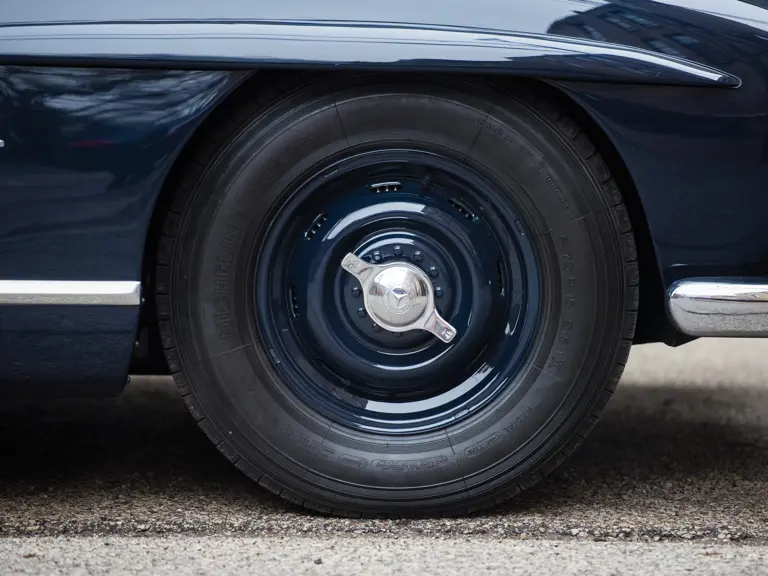
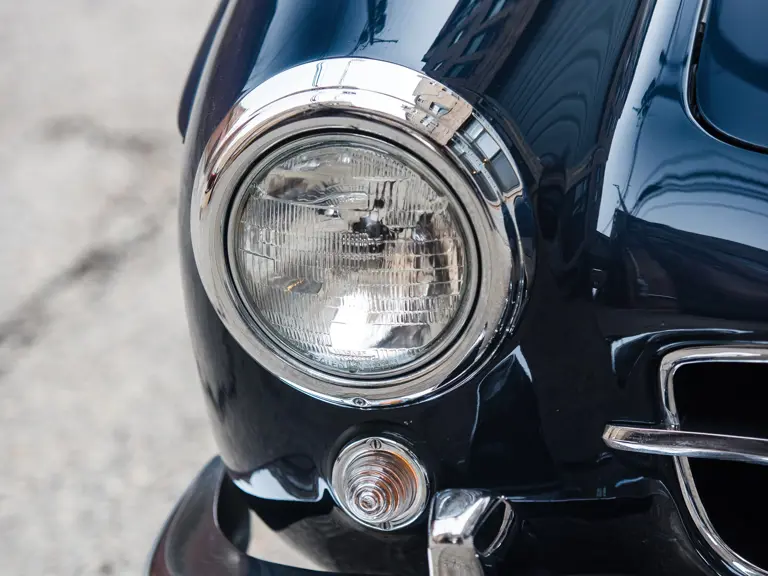
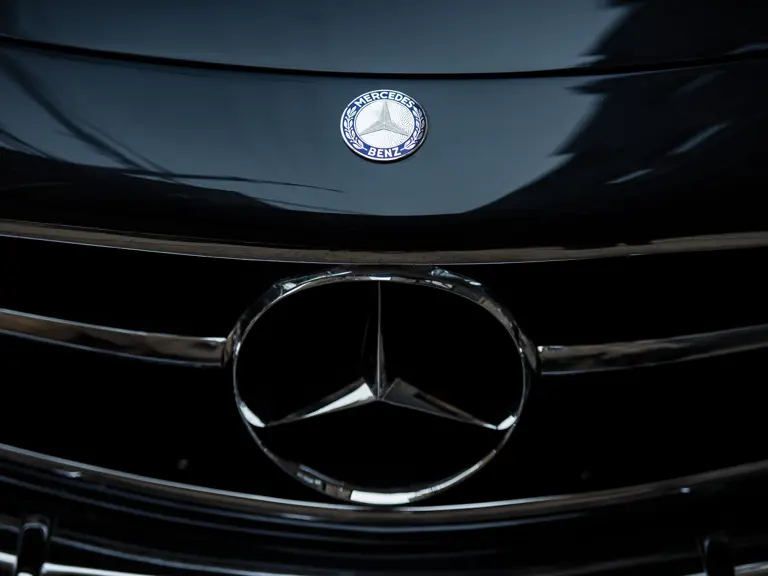
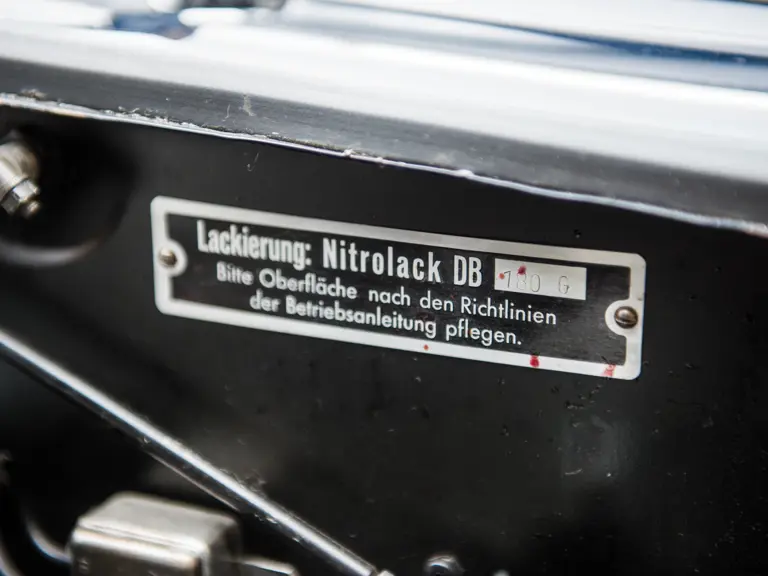
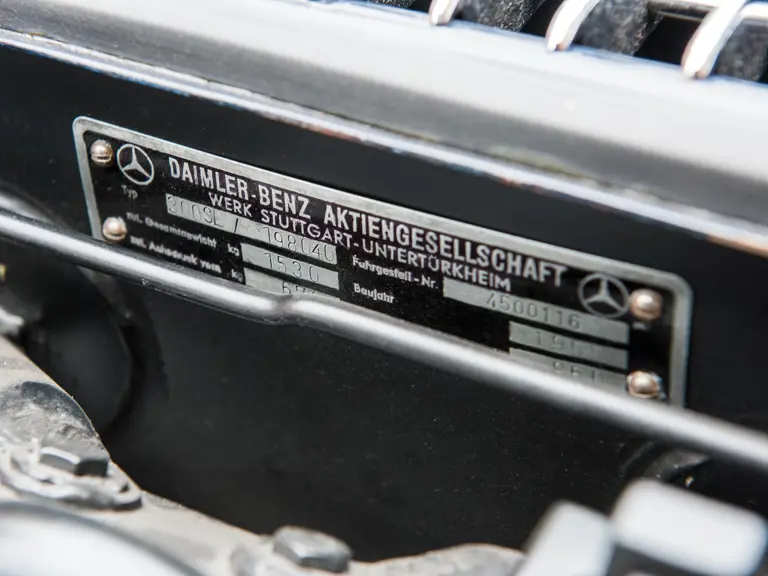
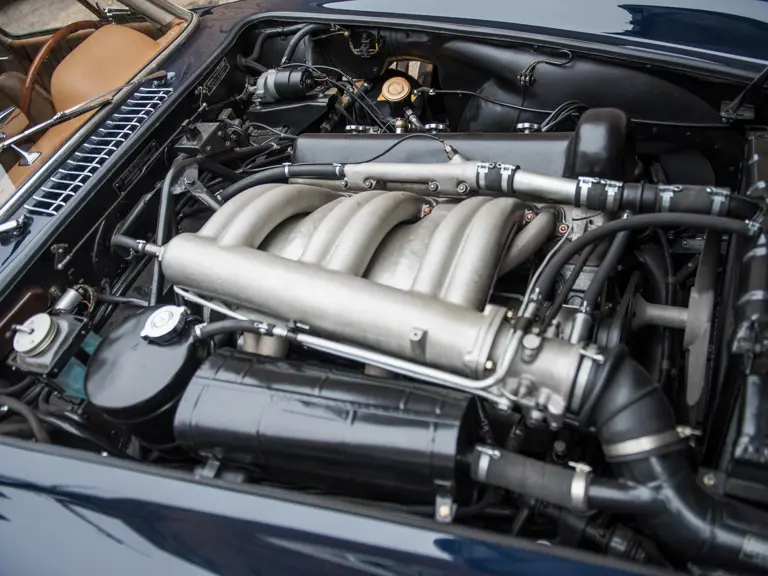
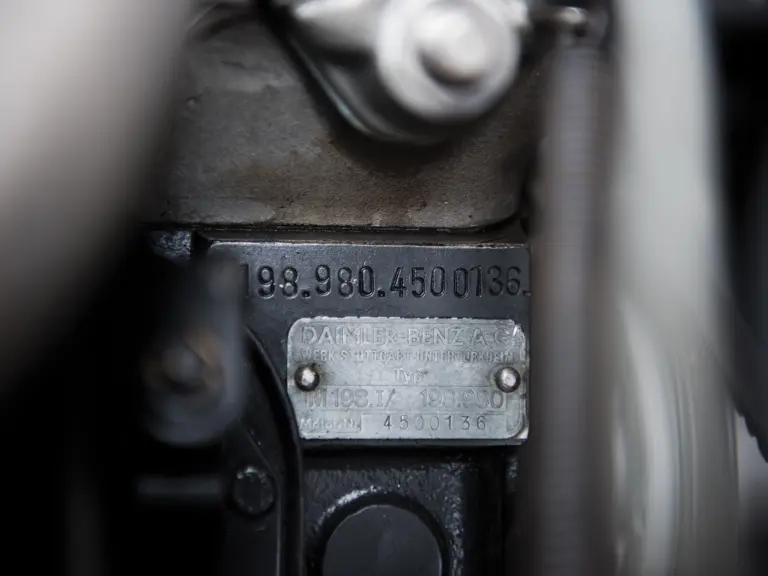

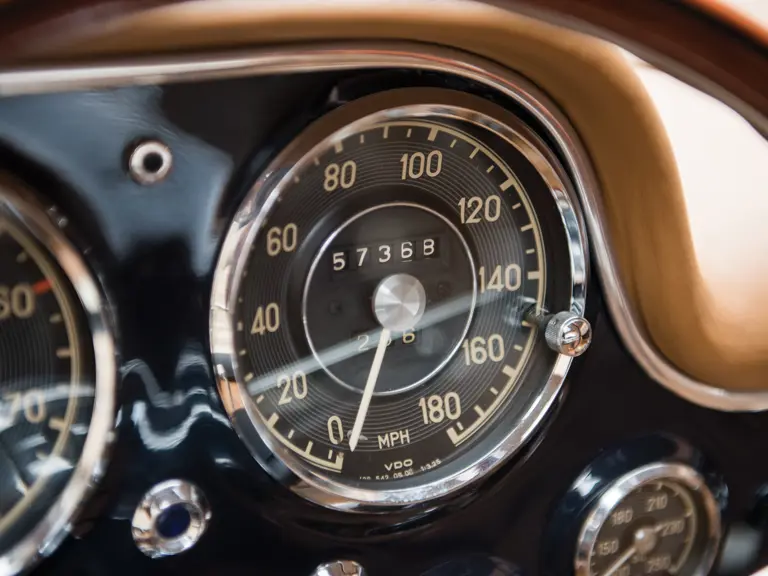


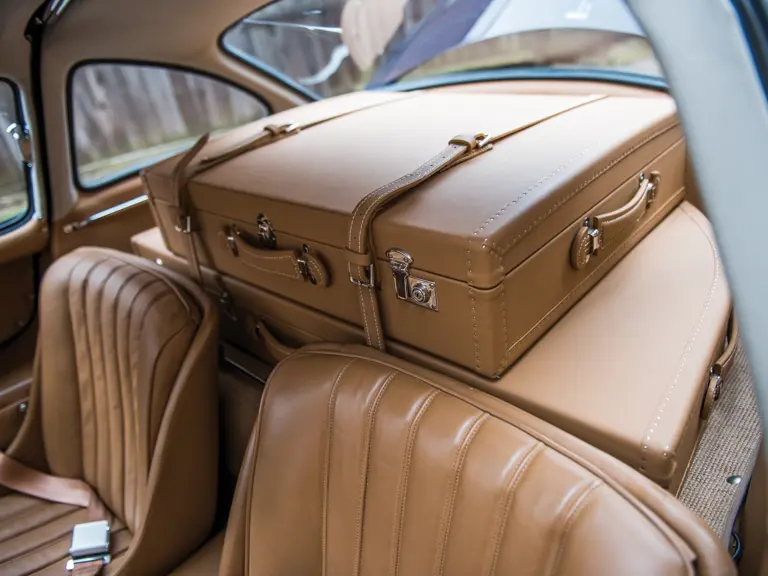
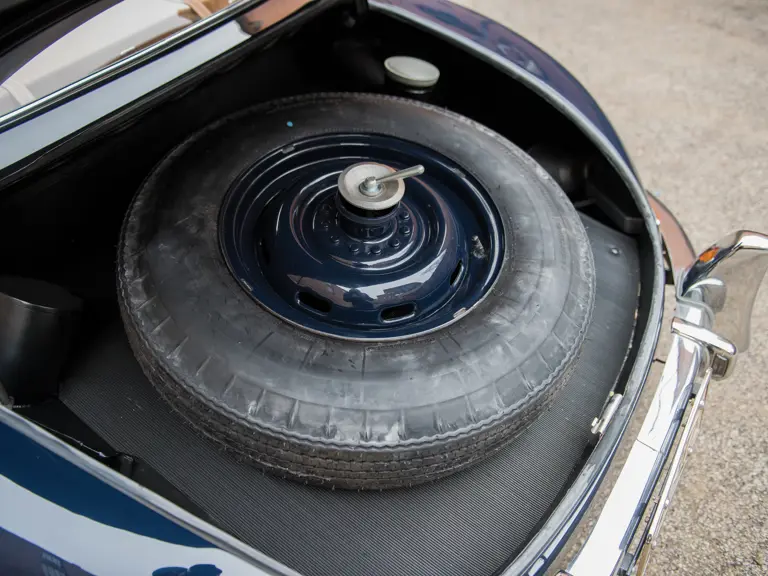
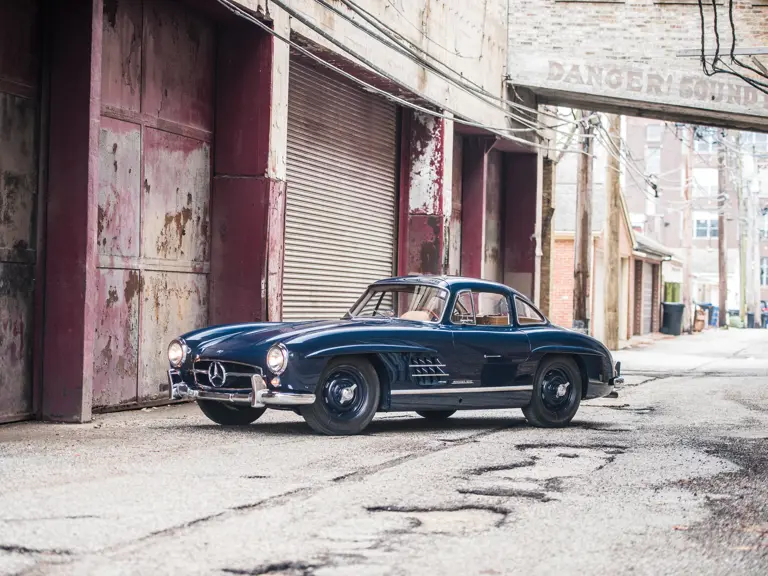
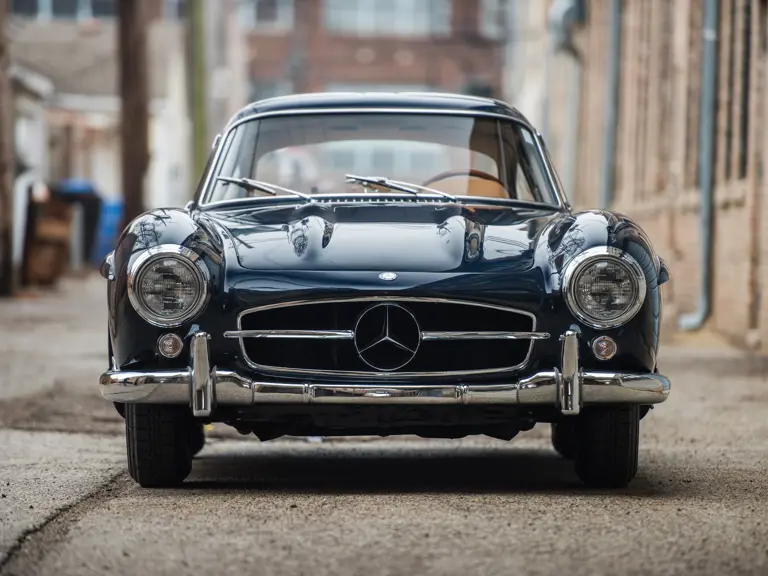
 | Amelia Island, Florida
| Amelia Island, Florida
